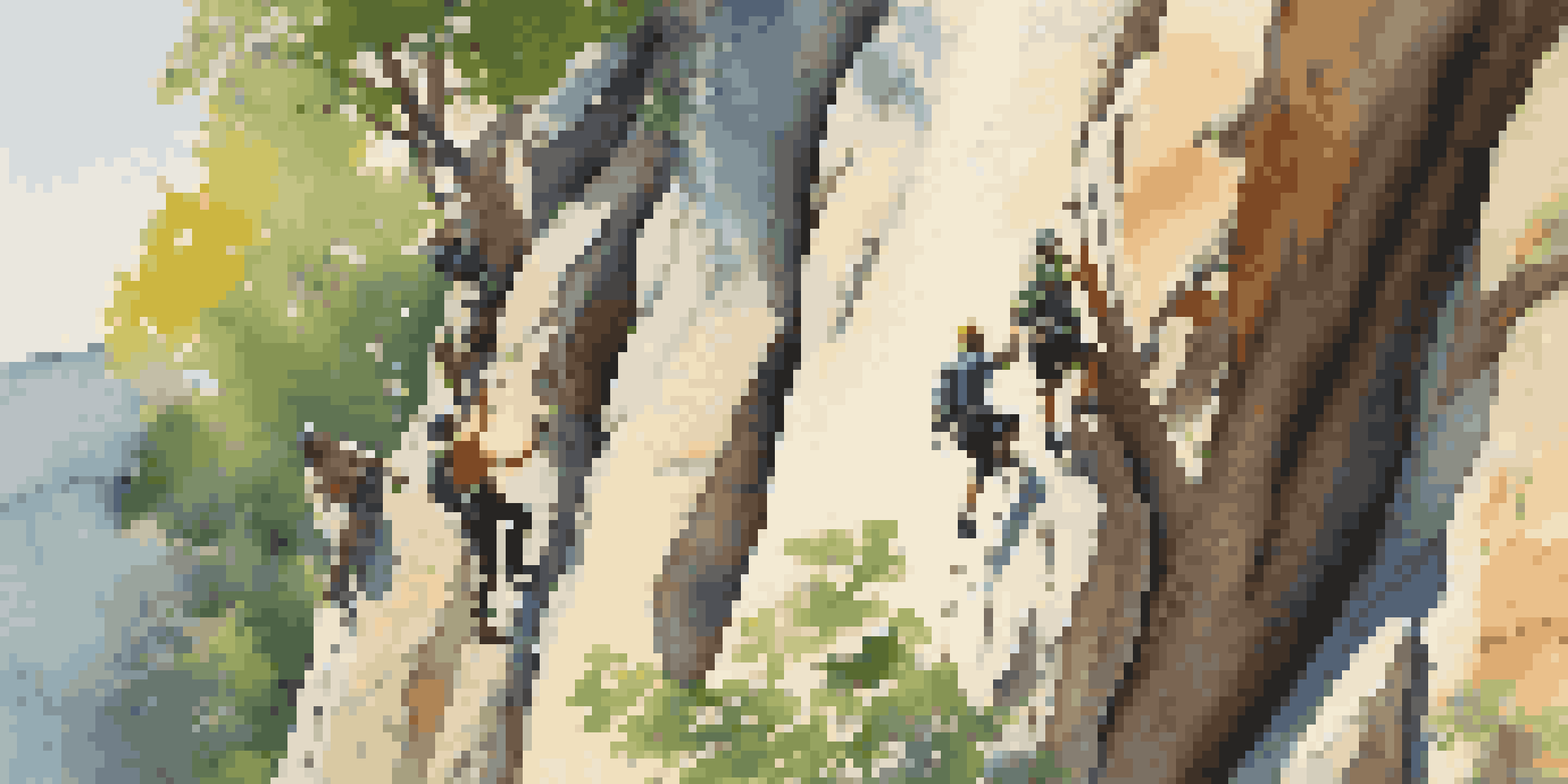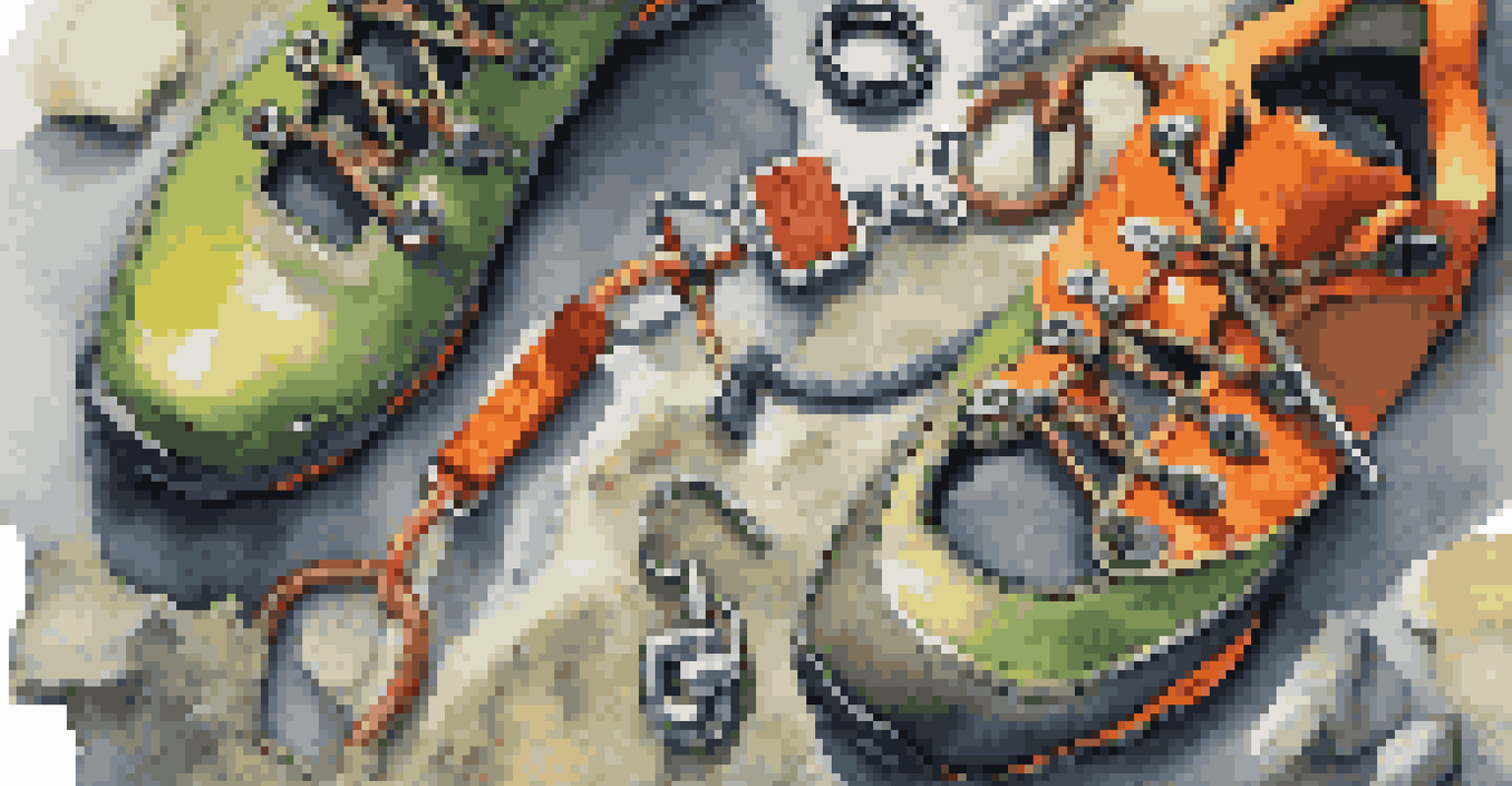Choosing the Right Climbing Route for Your Skill Level

Understanding Your Climbing Skill Level
Before you can choose the right climbing route, it’s crucial to understand your current skill level. Are you a beginner just learning the ropes, or an experienced climber ready for more challenging ascents? Knowing where you stand helps you avoid frustration and potential hazards on the wall.
The best climber in the world is the one who’s having the most fun.
Climbing grades, which indicate the difficulty of a route, can be a helpful guide. Familiarize yourself with the grading systems used in your area, as they can vary significantly. For example, a 5.10 in one location may feel vastly different from a 5.10 in another, depending on the rock type and route setting.
Additionally, assess your physical conditioning and mental readiness. Climbing isn’t just about strength; stamina, technique, and mental focus are equally important. Take the time to evaluate your abilities honestly to set yourself up for success.
Researching Climbing Routes
Once you have a grasp of your skill level, it’s time to research potential climbing routes. Websites, guidebooks, and climbing apps can provide valuable information on local crags and their routes. Look for detailed descriptions, photos, and ratings to help you make informed choices.

Don’t hesitate to reach out to local climbing communities for recommendations. Experienced climbers are often more than willing to share their insights and favorite routes. You might discover hidden gems that aren’t listed in the usual resources!
Know Your Climbing Skill Level
Understanding your current climbing skill level is essential for selecting appropriate routes and avoiding frustration.
Remember to check the latest conditions and any access restrictions for your chosen area. Weather can greatly affect climbing conditions, so being well-informed can help you avoid surprises on the day of your climb.
Evaluating Route Difficulty and Features
Understanding the specific features of a climbing route is essential for making the right choice. Pay attention to the type of rock, pitch length, and protection placements. Some climbers thrive on technical routes that require finesse, while others prefer more straightforward, powerful climbs.
Climbing is not just about going up; it’s about the journey you take to get there.
Consider the type of climbing you want to do as well. Are you interested in sport climbing, trad climbing, or bouldering? Each style has its unique challenges and requires different skills. Choosing a route that aligns with your preferred style can make the experience more enjoyable.
Finally, assess the overall experience you want from your climb. Do you seek breathtaking views, a challenging workout, or a social outing with friends? Your priorities can guide you toward routes that offer the right mix of challenge and enjoyment.
Setting Personal Goals for Climbing
Setting personal goals can enhance your climbing experience and help you choose the right routes. Do you want to improve your technique, increase your endurance, or simply enjoy the outdoors? By defining your objectives, you can select climbs that align with what you want to achieve.
For instance, if your goal is to improve your technical skills, look for routes that challenge your footwork and require precise movements. Conversely, if you're focusing on building strength, opt for more powerful routes that push your limits.
Research Routes and Conditions
Thoroughly researching climbing routes and current conditions helps ensure a safe and enjoyable climbing experience.
Remember, goals can be both short-term and long-term. Celebrate small victories along the way, and don't be afraid to adjust your goals as your skills evolve.
Climbing with a Partner: Shared Skills and Safety
Climbing with a partner can provide both safety and support, especially when choosing routes. Your partner’s skill level and experience can help you select appropriate climbs that neither of you will find overly challenging or unsafe. Having someone with complementary skills can make the adventure more enjoyable.
Discuss your preferences and goals before heading out. This discussion can lead to a better understanding of each other’s strengths and weaknesses, allowing you to choose routes that cater to both of your abilities. Communication is vital in ensuring a positive climbing experience.
Moreover, climbing together fosters a sense of accountability. You can motivate each other to push your limits while also keeping safety a top priority. Working as a team enhances both the fun and the learning experience.
Recognizing Your Comfort Zone and Pushing Boundaries
While it's important to challenge yourself, recognizing your comfort zone is equally vital when choosing climbing routes. Take time to assess how certain climbs make you feel and what you’re ready to tackle. Sometimes, stepping out of your comfort zone can lead to significant growth, but it should be done thoughtfully.
Start by selecting routes that are just slightly above your current skill level. This gradual approach allows you to build confidence and technique without overwhelming yourself. It’s like adding a sprinkle of spice to your favorite dish—just the right amount can elevate the experience, but too much can ruin it.
Set Goals and Push Boundaries
Setting personal goals and gradually pushing your comfort zone can lead to significant growth in your climbing abilities.
Ultimately, learning to navigate your comfort zone will help you become a more versatile climber. You’ll develop the ability to tackle various routes while also knowing when to take a step back and reassess your approach.
Continuous Learning and Evaluation
Climbing is a journey of continuous learning, so regularly evaluating your skills and experiences is important. After each climb, take a moment to reflect on what went well and what you can improve. This practice will help you make better-informed decisions in the future.
Consider keeping a climbing journal where you can track your routes, challenges faced, and personal achievements. This log can serve as a valuable resource for understanding your progress over time and adjusting your route choices accordingly.

Lastly, don’t forget to seek feedback from peers or mentors. Constructive criticism can provide you with insights that you might overlook, ultimately guiding you toward better climbing decisions and more rewarding experiences.